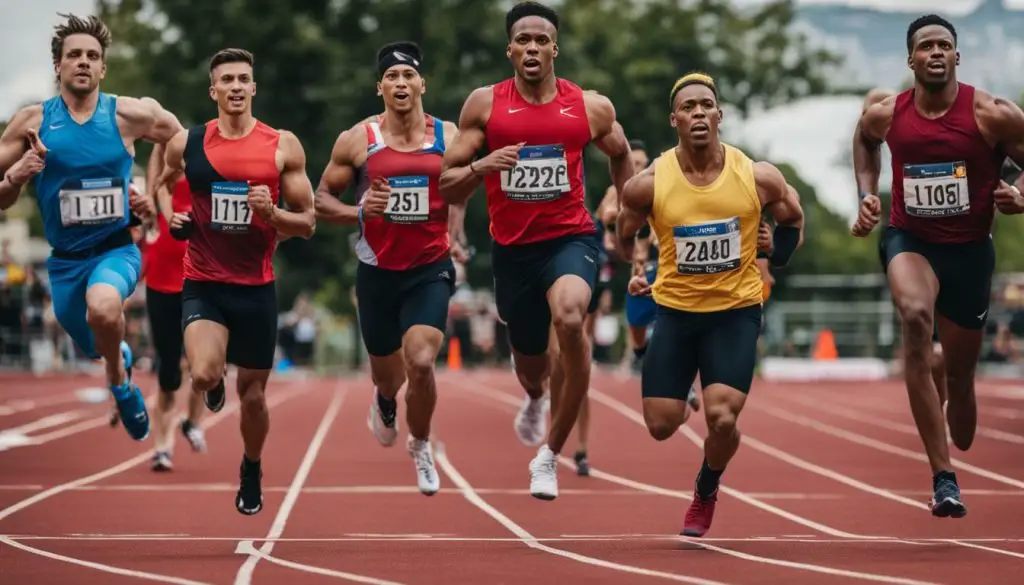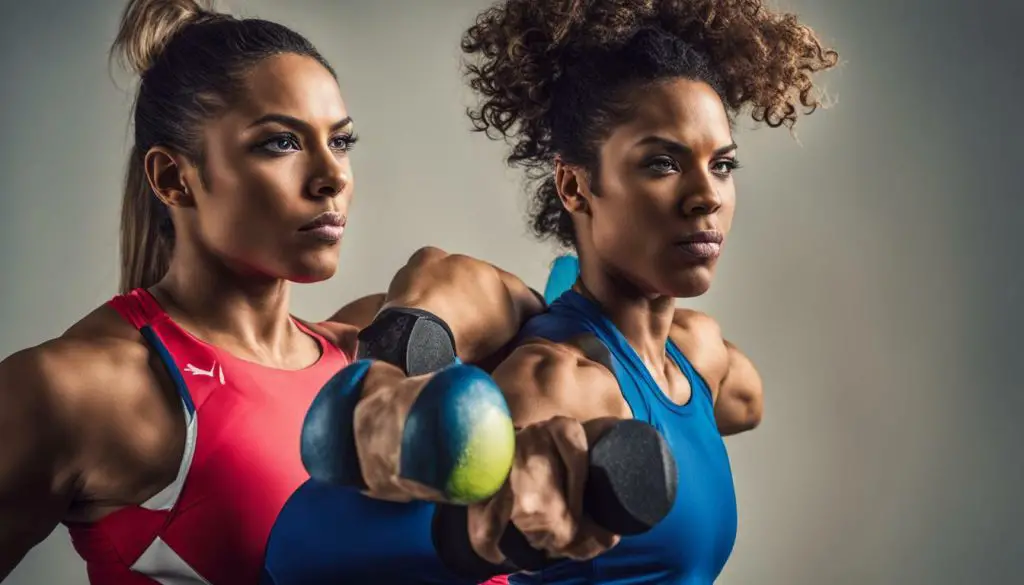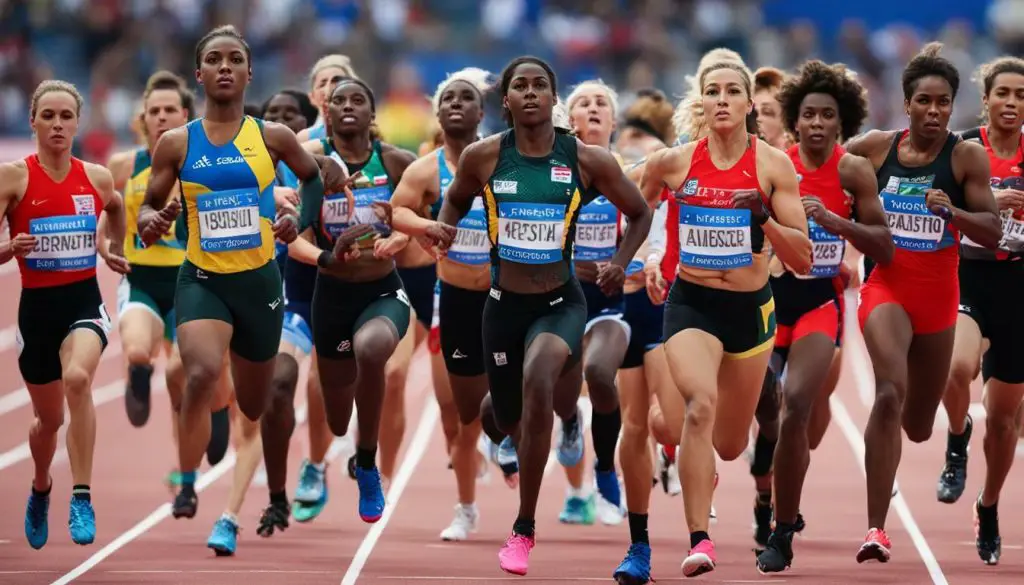Hormone therapy plays a significant role in the athletic performance of transgender athletes. It is important to understand why these athletes choose to take hormones and the impact it has on their ability to compete in sports.
Research has shown that prior to hormone therapy, transgender women (assigned male at birth but identify as female) have a 15-31% advantage over cisgender women in terms of athletic performance. This advantage includes factors such as muscle mass, strength, and speed.
However, after undergoing feminizing hormone therapy for a certain period of time, the athletic advantage of transgender women decreases. While they may still have some advantages in terms of muscle mass and strength compared to cisgender women, the gap narrows.
On the other hand, transgender men (assigned female at birth but identify as male) often experience a decrease in athletic performance prior to hormone therapy. However, after taking masculinizing hormones, they can see improvements in areas such as muscle mass, strength, and endurance.
The physiological changes brought about by hormone therapy contribute to these differences in athletic performance. For example, testosterone administration in transmen can lead to decreased body fat and increased muscle mass, strength, and hemoglobin levels.
It is important to note that guidelines for transgender inclusion in sports vary among different sporting organizations. Some organizations, such as World Athletics, have implemented guidelines that require transgender female athletes to maintain suppressed testosterone levels for a certain period of time before competing in women’s events.
However, it is important to continue research and gather evidence to ensure fair and inclusive policies for transgender athletes while also considering the fairness to cisgender athletes. Balancing the benefits of hormone therapy for transgender athletes with fair competition is a complex issue that requires further exploration.
In conclusion, hormone therapy is a crucial factor in the athletic performance of transgender athletes. Understanding the reasons behind their decision to take hormones and the effects it has on their performance is important for creating inclusive and fair policies in the world of sports.
The Athletic Advantage of Hormone Therapy for Transgender Women
A study conducted on transgender men and women in the United States Air Force found that prior to hormone therapy, transwomen had a 15-31% athletic advantage over their female counterparts. This advantage is attributed to the natural biological differences between male and female bodies, including factors such as muscle mass, strength, and oxygen-carrying capacity. However, after undergoing hormone therapy, the advantage declined, though transwomen still maintained a 9% faster mean run speed compared to cisgender women.
The physiological changes brought about by hormone therapy contribute significantly to the alteration in athletic performance. For transwomen, the administration of feminizing hormones, such as estrogen, leads to a decrease in muscle mass and strength. However, even with these changes, transwomen still retain an advantage over cisgender women in terms of muscle mass and strength due to their previous male puberty. It is important to note that these advantages are within the range of those observed among cisgender women, and hormone therapy helps transgender women align with their gender identity.

These findings highlight the importance of hormone therapy for transgender women in leveling the playing field and ensuring fair competition in sports. It allows them to align their physical attributes with their gender identity, reducing the inherent advantages that exist due to their assigned sex at birth. However, it is crucial to recognize that determining fair and inclusive policies for transgender inclusion in sports is a complex matter. Sporting organizations, such as World Athletics, have established guidelines that require transgender female athletes to demonstrate suppression of testosterone levels below a certain threshold for a specific period before competing in women’s events. Nonetheless, these guidelines have faced criticism due to the lack of supporting evidence and the ongoing debate around the appropriate criteria for inclusion.
Further research is necessary to develop comprehensive and evidence-based guidelines that strike a balance between the benefits to transgender athletes and the fairness to cisgender athletes. Understanding the effects of hormone therapy on athletic performance is vital in shaping these guidelines and ensuring a level playing field for all athletes.
The Impact of Hormone Therapy on Transgender Men’s Athletic Performance
Transmen, on the other hand, performed fewer push-ups and ran slower than their male counterparts prior to hormone therapy. However, after taking masculinizing hormones for one year, there was no longer a difference in push-ups or run times, and the number of sit-ups performed by transmen exceeded the average performance of their male counterparts.
These findings highlight the significant impact that hormone therapy can have on the athletic performance of transgender men. The administration of masculinizing hormones, such as testosterone, leads to changes in body composition and strength that align more closely with cisgender male athletes. Decreased body fat and increased muscle mass and strength contribute to improved physical performance in activities such as push-ups and running.
It is important to note that hormone therapy alone is not solely responsible for the athletic improvements seen in transgender men. Regular training, proper nutrition, and a commitment to physical fitness also play crucial roles. However, hormone therapy can provide transgender men with the physiological changes necessary to compete at a level that is more closely aligned with their male counterparts.
It is crucial to recognize the diverse experiences and needs of transgender athletes when formulating inclusive policies in sports. While hormone therapy can level the playing field for transgender men, it is essential to strike a balance between providing opportunities for transgender athletes while ensuring fairness for cisgender athletes. Continued research and ongoing dialogue are necessary to create comprehensive guidelines that promote inclusivity and fairness in sports.
The Impact of Hormone Therapy on Transgender Men’s Athletic Performance – Summary:
- Transmen perform fewer push-ups and run slower than cisgender males prior to hormone therapy.
- After one year of masculinizing hormone therapy, there is no longer a difference in push-ups or run times compared to cisgender males.
- Transmen experience improvements in physical performance, exceeding the average performance of cisgender males in sit-ups.
- Hormone therapy, combined with training and proper nutrition, contributes to changes in body composition and strength that align more closely with cisgender male athletes.
- Creating inclusive policies in sports requires considering the unique needs and experiences of transgender athletes while ensuring fairness for cisgender athletes.
Table: Pre and Post Hormone Therapy Performance Comparison of Transgender Men
| Athletic Parameter | Pre Hormone Therapy | Post Hormone Therapy |
|---|---|---|
| Push-ups | Fewer than male counterparts | No difference from male counterparts |
| Run times | Slower than male counterparts | No difference from male counterparts |
| Sit-ups | Below average of male counterparts | Above average of male counterparts |

Physiological Changes Brought About by Hormone Therapy
The physiological changes brought about by gender-affirming hormones contribute to differences in athletic performance among transgender athletes. Testosterone administration in transmen leads to significant alterations in body composition and physical performance. It decreases body fat and increases muscle mass, strength, and hemoglobin levels. These changes enable transmen to develop physical characteristics that are more aligned with male athletes, allowing them to compete at a similar level.
Conversely, testosterone suppression and estrogen administration in transwomen lead to changes in body composition that align more closely with cisgender women. While hormone therapy reduces muscle mass and strength compared to cisgender men, transwomen still maintain advantages in these areas over cisgender women. The alteration in muscle mass and strength can have a significant impact on a transwoman’s athletic performance, allowing them to perform at a higher level compared to their cisgender female counterparts.
It is important to note that the degree of physiological changes brought about by hormone therapy can vary among individuals. Factors such as genetics, age, and duration of hormone therapy can influence the extent to which these changes occur. Therefore, it is crucial to consider these individual differences when developing guidelines for transgender inclusion in sports.
Providing equal opportunities for transgender athletes while ensuring fair competition is a complex matter. Sporting organizations, such as World Athletics, have established guidelines that require transgender women to demonstrate suppression of testosterone levels to a certain threshold for at least 12 months before competing in women’s events. However, these guidelines have faced criticism for their lack of supporting evidence and potential biases.
To achieve a fair and inclusive environment for all athletes, further research is needed to develop comprehensive guidelines that consider the individual physiological changes brought about by hormone therapy. This will help strike a balance between providing opportunities for transgender athletes and ensuring fair competition among all participants.

| Gender | Before Hormone Therapy | After Hormone Therapy |
|---|---|---|
| Transmen | Lower muscle mass and strength | Increase in muscle mass and strength; comparable to male counterparts |
| Transwomen | Higher muscle mass and strength compared to cisgender women | Reduction in muscle mass and strength, but still an advantage over cisgender women |
Challenges and Guidelines for Transgender Inclusion in Sports
The guidelines for transgender inclusion in sports vary across sporting organizations, creating a complex issue that requires further research. World Athletics, for example, has implemented policies that require transgender female athletes to demonstrate suppression of testosterone levels to a certain threshold for at least 12 months before competing in women’s events. These guidelines aim to ensure a fair playing field by mitigating the potential advantages that transgender women may have over cisgender women due to the effects of hormone therapy.
However, these guidelines have faced criticism and legal challenges, with some arguing that they are not based on sufficient scientific evidence. The debate revolves around finding a balance between allowing transgender athletes to participate in sports and ensuring fair competition for all athletes. It is crucial to develop comprehensive guidelines that consider the individual circumstances of transgender athletes while also addressing concerns related to competitive fairness.
Transgender inclusion in sports goes beyond hormone regulation. It also involves considerations such as privacy, locker room access, and the overall acceptance and support within the sporting community. Creating an inclusive and supportive environment for transgender athletes requires education, awareness, and empathy from coaches, teammates, and sporting organizations.
The Importance of Comprehensive Guidelines
Developing comprehensive guidelines for transgender inclusion in sports is essential to ensure fairness, inclusivity, and the well-being of all athletes. These guidelines should take into account the physiological effects of hormone therapy, the individual circumstances of each athlete, and the principles of fair competition. Additionally, ongoing research and collaboration between medical professionals, sporting organizations, and transgender athletes themselves are crucial in creating a framework that adequately addresses the unique challenges and needs of transgender athletes.
Summary of Challenges and Guidelines for Transgender Inclusion in Sports
- The guidelines for transgender inclusion in sports vary across organizations, necessitating further research to develop comprehensive and fair policies.
- World Athletics requires transgender female athletes to demonstrate suppression of testosterone levels for 12 months before competing in women’s events.
- The guidelines have faced criticism and legal challenges, highlighting the need for evidence-based approaches.
- Comprehensive guidelines should consider the individual circumstances of transgender athletes while also ensuring fair competition.
- Inclusivity goes beyond hormone regulation, encompassing privacy, locker room access, and overall acceptance and support within the sporting community.
- Education, awareness, and empathy are essential in creating an inclusive environment for transgender athletes.
- Ongoing research and collaboration between medical professionals, sporting organizations, and transgender athletes are crucial in developing comprehensive guidelines.
Conclusion
Transgender inclusion in sports is a complex issue that requires careful consideration and research. While hormone therapy plays a significant role in the athletic performance of transgender athletes, developing fair and comprehensive guidelines that balance the needs of transgender and cisgender athletes is essential. It is crucial to ensure inclusivity, fairness, and the well-being of all athletes throughout this process. Ongoing collaboration and research will help pave the way for a more equitable and supportive sporting environment for transgender athletes.
| Group | Performance Measure | Before Hormone Therapy | After Hormone Therapy |
|---|---|---|---|
| Transwomen | Athletic Advantage Over Female Counterparts | 15-31% | N/A |
| Mean Run Speed | 9% faster | N/A | |
| Transmen | Push-Ups | Performed fewer than male counterparts | No difference |
| Run Times | Ran slower than male counterparts | No difference | |
| Transmen | Sit-Ups | Performed more than male counterparts | N/A |

Hormone therapy is essential for transgender athletes to align with their gender identity and participate in sports, but finding a balance between the benefits to transgender athletes and fairness to cisgender athletes remains a complex issue.
A study conducted on transgender men and women in the United States Air Force revealed that hormone therapy significantly impacts athletic performance. Prior to hormone therapy, transwomen had a 15-31% athletic advantage over cisgender women. However, after two years of taking feminizing hormones, this advantage declined, although transwomen still maintained a 9% faster mean run speed than their cisgender counterparts. For transmen, hormone therapy closed the performance gap with cisgender men. After one year of taking masculinizing hormones, transmen exhibited similar push-up and run times, and even exceeded the average performance of their cisgender male counterparts in sit-ups.
These differences in athletic performance can be attributed to the physiological changes brought about by gender-affirming hormones. Testosterone administration in transmen decreases body fat and increases muscle mass, strength, and hemoglobin levels. Conversely, testosterone suppression and estrogen administration in transwomen have the opposite effect, but still leave them with an advantage in muscle mass and strength over cisgender women.
However, the guidelines for transgender inclusion in sports vary among sporting organizations. World Athletics, for example, requires transwomen to demonstrate suppression of testosterone levels to a certain threshold for at least 12 months before competing in women’s events. Yet, these guidelines have faced criticism due to a lack of sufficient supporting evidence.
In conclusion, hormone therapy plays a crucial role in allowing transgender athletes to align with their gender identity and actively participate in sports. Nonetheless, establishing fair and inclusive policies that balance the benefits to transgender athletes and the fairness to cisgender athletes remains an ongoing challenge. Further research is needed to develop comprehensive guidelines for transgender inclusion in sports.
FAQ
Why is hormone therapy important for transgender athletes?
Hormone therapy is crucial for transgender athletes as it helps them align with their gender identity and participate in sports.
What athletic advantages can hormone therapy provide for transgender women?
Hormone therapy for transgender women can lead to changes in muscle mass and strength, giving them a potential advantage in athletic performance.
How does hormone therapy impact transgender men’s athletic performance?
Hormone therapy can help transgender men achieve similar levels of muscle mass and strength as their male counterparts, bridging the gap in athletic performance.
What physiological changes occur as a result of hormone therapy?
Testosterone administration in transmen decreases body fat and increases muscle mass, strength, and hemoglobin levels, while testosterone suppression and estrogen administration in transwomen have the opposite effect but still leave transwomen with an advantage in muscle mass and strength over cisgender women.
What are the challenges and guidelines for transgender inclusion in sports?
Sporting organizations have varying guidelines, with some requiring transgender female athletes to demonstrate suppression of testosterone levels for a certain period before competing in women’s events. However, these guidelines have been challenged due to a lack of supporting evidence.
What is the conclusion regarding hormone therapy for transgender athletes?
Hormone therapy is essential for transgender athletes to align with their gender identity and participate in sports. Balancing the benefits to transgender athletes and fairness to cisgender athletes remains a complex issue, and further research is needed to develop comprehensive guidelines for transgender inclusion in sports.